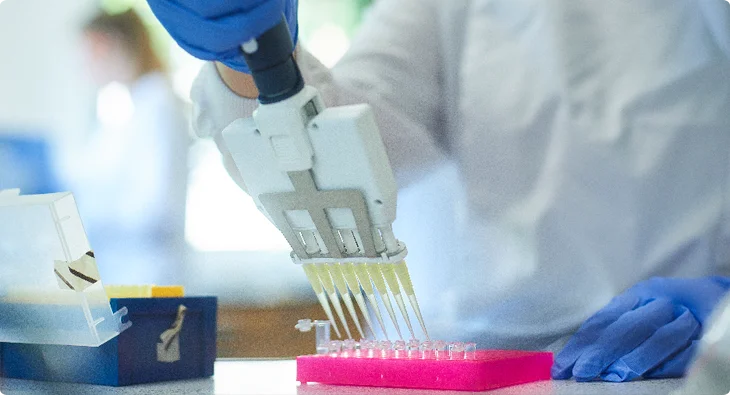Getting Double the Data from Less Sample: An xMAP INTELLIFLEX® Dual Reporter Assay in Action
Using the new INTELLIFLEX System’s second reporting channel, our scientists teamed up with experts at the University of Rochester to design, optimize, and validate their SARS-CoV-2 antibody assay
If you’ve been eager to see how the new dual reporter channel works on the xMAP INTELLIFLEX® DR-SE System, you’re in luck! In a recent JoVE video, we walked through this process using a multiplex assay designed to detect multiple antibodies to SARS-CoV-2. Here are some of the highlights!
The assay was designed using xMAP® Technology and is based on work from a team of scientists at the University of Rochester Medical Center. To ensure robust results, they validated the assay with thousands of samples, making it possible to reliably detect the levels of two immunoglobulins in a single reaction while measuring the generation of potential SARS-CoV-2 neutralizing antibodies.
To help the team take the next step, Senior Field Applications Specialist Dr. Stephen Angeloni and other Luminex scientists worked with them to adapt the assay to the latest xMAP platform—the INTELLIFLEX DR-SE System. This new system offers a dual reporter channel that allows users to generate twice as much data from analytes in the sample, reducing the sample volume and time required to produce the information needed. This unique capability made it possible for the scientists to adapt the assay to detect IgM antibodies in addition to the original IgG responses in a single reaction. The video also demonstrates, for the first time ever, how the assay can be easily modified to measure the generation of potential neutralization capabilities of these immunoglobulins.
“To our knowledge, this is the first example of a bead-based multiplexing protocol that uses two reporter signals to simultaneously measure two results per analyte,” says Dr. Sherry Dunbar, Luminex’s Senior Director of Global Scientific Affairs, in the introduction to the video. “While this dual reporter method is specific for antibody isotyping, it could be adapted to measure other analyte pairs, such as post-translational modifications or free versus bound drug forms.”
The rest of the video follows Dr. Angeloni, who demonstrates the dual-reporter assay and key elements of the process, such as optimization. It includes clear, step-by-step instructions to help current xMAP users follow along throughout the protocol.
The results of Dr. Angeloni & his teams’ efforts are reported in the JoVE video presentation: “A Rapid, Multiplex Dual Reporter IgG and IgM SARS-CoV-2 Neutralization Assay for a Multiplexed Bead-Based Flow Analysis System.” To learn more, check it out on JoVE!
For Research Use Only. Not for use in diagnostic procedures.


